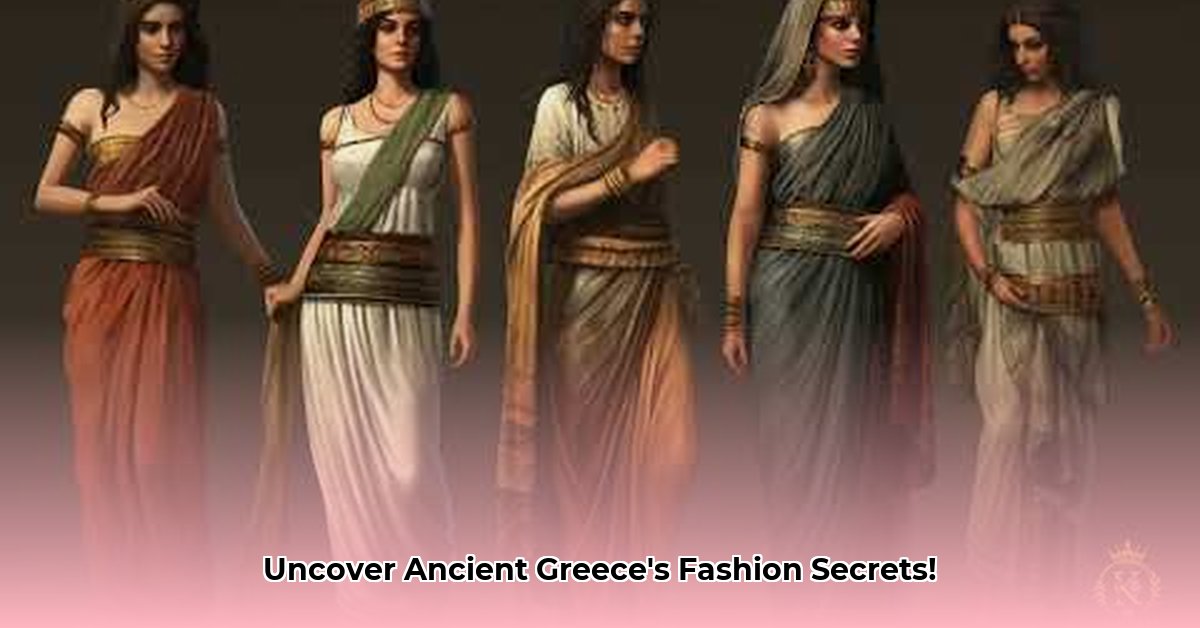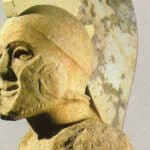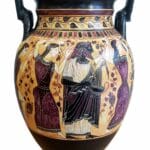Ancient Greek clothing, a far cry from the simple image of togas and sandals, reveals a fascinating tapestry of societal complexities. From the intricate craftsmanship of the Minoan civilization to the flowing elegance of the Hellenistic period, Greek garments evolved significantly, reflecting not only shifting aesthetics but also technological advancements, trade influences, and evolving social structures. This journey through time unveils how clothing became a powerful communicator of social status, occupation, and even individual personality in ancient Greece. For comparison of artistic expression across cultures, see examples of Japanese artistry.
From Fitted to Flowing: The Evolution of Greek Garments
Early Minoan and Mycenaean clothing, characterized by fitted forms and elaborate designs, offers a glimpse into a society that valued intricate craftsmanship and potentially a more rigid social hierarchy. Frescoes and artifacts from this era showcase complex layered skirts, tight bodices, and intricate hairstyles, suggesting an emphasis on displaying wealth and status through elaborate attire.
A pivotal shift occurred during the Archaic and Classical periods, marked by the transition to looser, draped styles. This change perhaps reflects a movement towards simpler lifestyles or evolving social norms. The iconic chiton, a simple tunic, became a staple for both men and women, its versatility adaptable to various social classes and activities. However, even within this seemingly basic garment, social distinctions were evident. A chiton crafted from fine linen, perhaps dyed with vibrant colors, signified wealth and status, while a coarser wool chiton indicated a lower social standing.
The himation, a versatile cloak worn by both men and women, further diversified the ancient Greek wardrobe. Its size, fabric, and the way it was draped – over one shoulder or both, covering the head or left bare – could all communicate nuances of social status, age, and even personal style. The peplos, a heavier, draped garment typically worn by women, often featured decorative elements and intricate folds, further showcasing the evolving artistry of Greek clothing. The chlamys, a shorter cloak favored by young men, particularly soldiers and horsemen, provided practicality and mobility while also conveying a sense of youthful vigor.
Deciphering Authenticity: Identifying Ancient Greek Clothing Replicas
Authenticating ancient Greek clothing replicas demands a meticulous approach, combining historical knowledge, material analysis, and stylistic comparison. Provenance, the documented history of an item, is paramount. A clear chain of ownership, ideally supported by scholarly documentation, significantly strengthens the case for authenticity.
Fabric analysis is crucial. Ancient Greek garments primarily utilized linen, wool, and occasionally silk. Replicas crafted from synthetic fibers or modern weaving techniques are immediate indicators of inauthenticity. Experts emphasize examining the fabric for age-appropriate wear and tear. An overly “perfect” replica should raise suspicion. Studying the stitching is equally important. Ancient Greek clothing often employed simple running stitches or overcasting. More intricate, modern stitching methods are telltale signs of a reproduction.
Stylistic analysis, comparing the garment to depictions in ancient art – sculptures, pottery, and frescoes – is essential. Discrepancies in cut, drape, or embellishments can reveal modern interpretations. Finally, consulting with reputable textile historians or archaeologists, particularly for high-value items, provides invaluable expertise. Their knowledge can offer definitive authentication based on both stylistic and scientific evidence.
Clothing as Social Currency: Reflecting Status in Ancient Greece
Ancient Greek clothing operated as a sophisticated visual language, instantly communicating social standing and wealth. While basic garments like the chiton, himation, and peplos spanned all social classes, their execution varied significantly. Fabric quality, embellishments, color, and even the manner of draping all contributed to a complex system of visual cues that signaled wealth, status, and social roles.
The vibrant purple dye, extracted from rare sea snails, epitomized luxury and was often reserved for the elite. This costly and labor-intensive dye became a powerful symbol of wealth and privilege. Similarly, imported silks and intricately embroidered designs adorned the garments of the wealthy, further distinguishing them from the common populace. Even the seemingly simple act of draping a himation could communicate social nuances. An elaborate drape might signify leisure and high status, while a simpler, more practical drape indicated a working-class individual.
Regional variations in clothing styles further enriched this visual language. Distinct styles emerged in different areas of Greece, reflecting local traditions, resources, and cultural influences. These variations add another layer of complexity to the study of ancient Greek clothing, highlighting the diversity and dynamism of ancient Greek society. While much has been uncovered about the intricate relationship between clothing and social status in ancient Greece, further research continues to illuminate the nuances of ancient Greek fashion and the subtle ways individuals used clothing to navigate and express their place within a complex social hierarchy.
- Unlock Water’s Symbolism: A Cross-Cultural Exploration - April 20, 2025
- Identify Black and White Snakes: Venomous or Harmless? - April 20, 2025
- Unlocking Potential: Origins High School’s NYC Story - April 20, 2025















